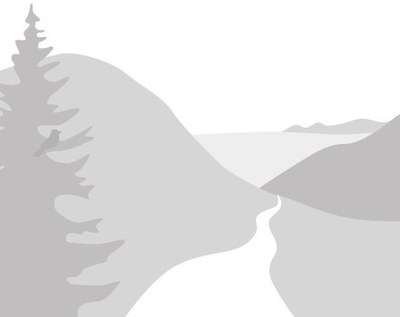
Trip Report
Intermediate Alpine Climb - Mount Stuart/Sherpa Glacier
3 day winter intermediate climb of Stuart / Sherpa Glacier.
- Fri, Feb 11, 2022 — Sun, Feb 13, 2022
- Intermediate Alpine Climb - Mount Stuart/Sherpa Glacier
- Mount Stuart/Sherpa Glacier
- Climbing
- Successful
-

- Road suitable for all vehicles
-
Hard snowpack all the way from the Bridge Creek parking lot to the camp in the basin below Sherpa and Ice Cliff glaciers. The climbing route (especially the couloir) was spicier than expected due to less than generous snowpack for this time of the year. We found a hardpack crust requiring front pointing going up and mandating rappels on our way down to ensure a safe descent back to the glacier. On the final slopes from the top of the couloir to the summit we found a few inches of soft snow but luckily holding in place our boot steps . Extra cautious was a must, definitely countless no fall zones and if the temps would had been just a few degrees higher , getting back to the top of the Sherpa couloir would have been more concerning.
This was a 3 day trip.
Day 1 (7:40 hours) - hiked from the Bridge creek campground parking lot into the basin below Sherpa and Ice Cliff glaciers where we did setup the camp. Put the snowshoes on from the Stuart Lake TH to avoid occasional potholing in the crusty snow pack. The path to the split with Colchuck lake trail was well beaten down and beyond that point was less traveled but still mostly easy to follow. Some older snowshoes tracks were on and off and made us think they were going more or less in the same area but after the the Mountaineers Creek crossing they disappeared and we suspected they went to the basin below Argonaut routes. After we setup camp, three of us decided to get closer and take a look at the Ice Cliff route start and it definitely didn't look too inviting. It looked challenging to negotiate the huge serac at the beginning of the route and required at least one pitch of ice even to get below the serac.
Day 2 (15 hour day camp to camp ) - 5:40 am start, 15 hour day camp to camp. We found spicier than expected hardpack and icy conditions in the couloir, protected it with pickets and we made it to its top in about 3 hours. I knew at that point it would be a very long descent down and not an easy downclimb as we hoped for. But we decided to take it one step of a time, assess conditions and keep going for the summit while following the standard route from that point. Overall the temps were colder than forecast at about 10-15 at night (forecasts were from 25-35), avi forcast went from low across the board to low/moderate/moderate for the south facing slopes. Those were getting soft between 10am-noon as we crossed them but overall they were holding up, colder temps helped. Definitely countless no fall, but absolutely no fall zones. I was not functioning at my full capacity due to less then two hours of sleep the night before and after discussing with the rest of the party we aligned that it was the right thing for me to stop and rest about 350 ft below the summit (I tagged it twice before), recharge my batteries crucial for the long challenging downclimb, the co-leader and the other two climbers would go and tag it while I would watch their progress. We then regrouped and started our descent right after 1 pm. Made it to the top of the col without using rope / pickets but had to carefully watch every single step while dealing with crampons balling up on the south facing slopes traverses. We did 6 x 60m rappels from the col to the glacier. We left a cord and 3 pickets behind. 1st 60m single strand rap with a mid slope picket placed for the last person who downclimbed with a belay. Then a cord around a horn for a double rope rap. Then a picket anchor with the first 3 rapping and the last downclimbing with a belay while also protected by two pickets. At the steepest part of the couloir is where we all did double rope raps and left 3 pickets behind. That got us across the bergschrund and back on the glacier where we roped back up for an easy glacier travel back down. Made it back at camp around 8:40 PM under bright moonlight.
Day 3 (started at 8:40 am, 6 hours) - hike out.
We found a stream with easy access for water right next to camp. Used all our 4 pickets, 2 tools each (or one technical ice ax and one tool), crampons, snowshoes.
I could do a better job and think about keeping the emergency stove with me and melt some snow for water while the rest of party pushed for the summit . That didn't happen and we ended up burning some time (half an hour ?) melting snow after we regrouped .
Anyway, overall a great winter climb with a great strong group. Conditions up there are not February conditions. Cascades East and South must get more snow this season. Some slopes on the ridges and peaks in the area showed late March / April conditions. We heard similar stories in the parking lot about similar hardpack or bare rock conditions on Dragontail Triple Couloirs and Colchuck NBC, forcing climbers to abandon / turn around while on their routes.
 Rodica Manole
Rodica Manole